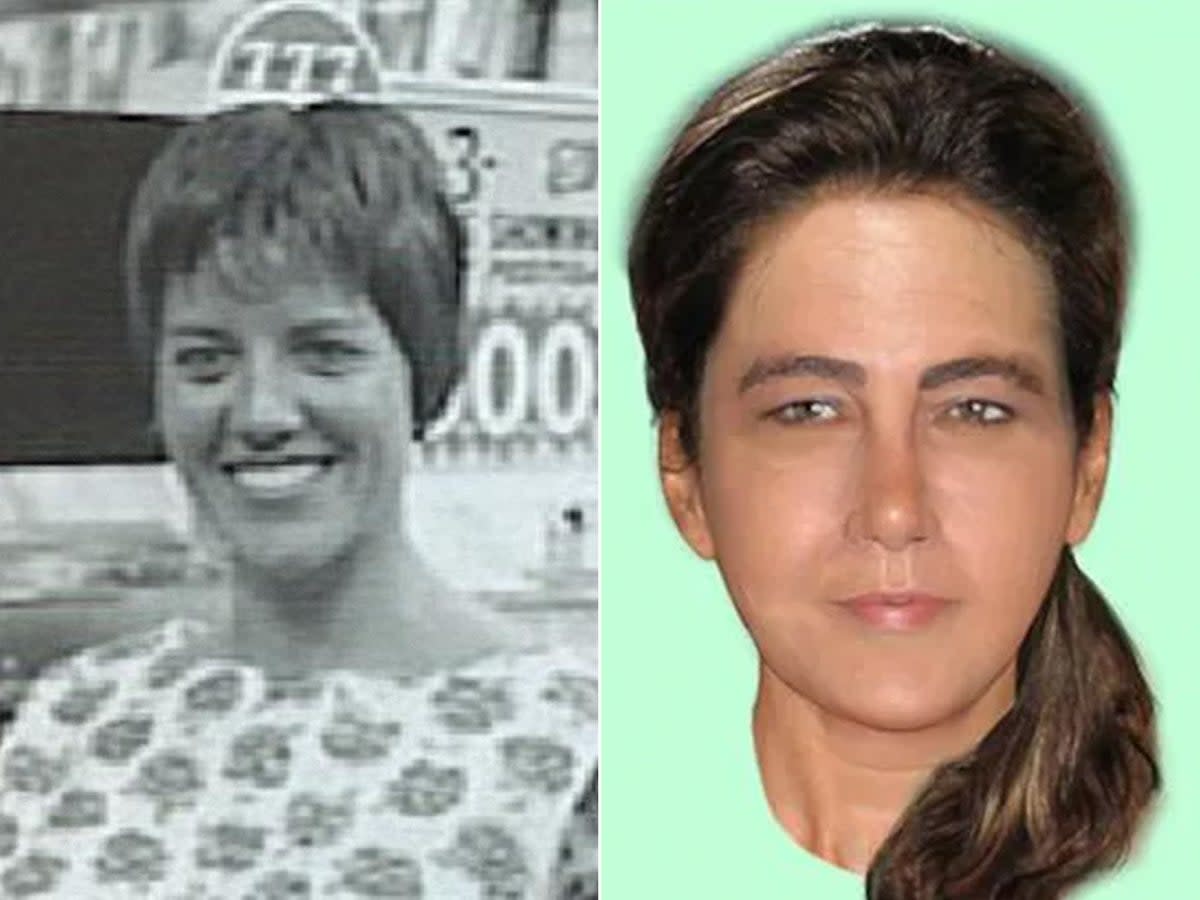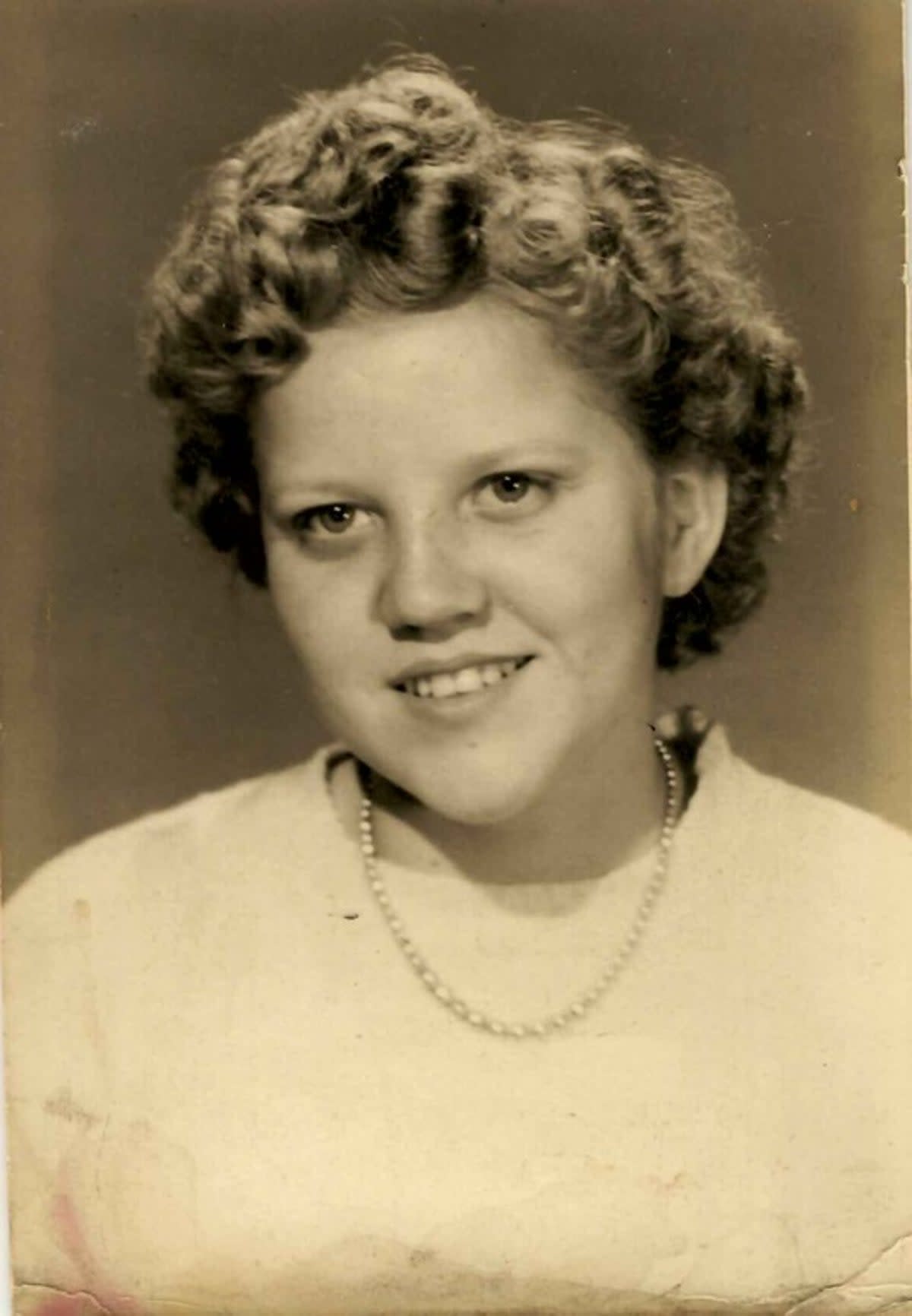Could the newly-identified Lady of the Dunes have been an extra in Jaws?

There is a desolate beauty to the dunes near the very edge of Cape Cod, where the windswept shores are battered by the Atlantic and little more than scrub brush and trees can survive. It was here where an adolescent girl and a dog found a body, the head nearly severed and hands gone, on a July day in 1974.
The discovery by Provincetown, Massachusetts, set off a mystery that captivated investigators for decades, the victim earning the elegant moniker The Lady of The Dunes as her identity remained unknown – until last year. The FBI announced in October 2022 that she’d been identified as Ruth Marie Terry, a 37-year-old woman from Tennessee, who until that moment had been the oldest unidentified homicide victim in Massachusetts.
Authorities held a press conference last year just hours after notifying Ms Terry’s relatives, setting off a cascade of new revelations – first, the identification of her then-husband as a prime suspect, and now, this week, the confirmation that he was, in fact, her killer. With the announcement that Guy Rockwell Muldavin had taken the life of The Lady of the Dunes, the case was officially closed.
It marked the end of a macabre puzzle that has drawn the fascination of countless armchair sleuths for half a century, the case combining all the elements of a blockbuster murder mystery: A postcard-perfect location. A headless corpse. An avalanche of questions. And even, it turned out, possible Hollywood connections.
It all began on 26 July 1974, when 12-year-old Leslie Metcalfe and her family were visiting the Cape Cod National Seashore. A dog with the group caught a scent and Leslie followed it; the dog started barking. That’s when Leslie spotted what she initially thought was a dead dear. She soon realized it was a human. She raised the alert and the crime scene would turn out to be particularly gruesome.

The decomposing body, which had been dead for up to several weeks, was that of a woman. Her reddish brown mane secured with a gold-flecked hair tie. Her head had nearly been severed. Both hands and one forearm were missing. The woman’s skull had been bashed in and she was naked but resting on a towel, her head placed on a pair of folded-up Wrangler jeans and a blue bandana.
Investigators determined that the woman was between about 20 and 40, 5’6 to 5’8, and weighed approximately 145 pounds. Her toenails were painted pink and she had expensive dental work that authorities valued at up to $10,000 and described as being in “the New-York style” of the time.
The fatal injury was her crushed skull, investigators found, and it was believed to be caused by a military-style entrenching tool. The removal of the victim’s hands was thought to be an attempt by the killer to hide the victim’s identity, their own or both.
There were no defensive wounds on the body, indicating that she’d either known her killer or been asleep at the time of the fatal attack.
Warren Tobias, retired acting police chief in Provincetown, has said the victim was “definitely posed” in her dunes location.
“She was lying out on a beach towel as if she was sunbathing,” he told People in 2018.
Detectives combed missing persons records and appealed for information, but there were no fruitful leads or IDs. In October of 1974, the Jane Doe -- who would eventually come to be called The Lady of the Dunes -- was buried in St Peter’s Cemetery in Provincetown, where her headstone still reads: “Unidentified Female Doe. Found Race Point Dunes. July 26, 1976.”

The complete inability to determine the Lady’s identity frustrated investigators for years as law enforcement regimes changed and new detectives threw themselves at the case while those who initially worked it kept digging even after retirement.
The body was exhumed in 1980 so blood samples could be taken. It was exhumed again in 2000 “to see if it matched that of a woman who came forward as possibly the mother of the victim,” the Cape Cod Times reported.
“A clay model has been made of the woman’s head, and age-regression drawings were completed in 2006,” the publication noted.
In 2010, the National Center for Missing and Exploited Children created an even more advanced composite 3D image. None of that yielded answers.
In 2018, retired chief Tobias theorised that the victim could have been from a foreign country or had no family, given that decades had passed without her identification.
As last year’s FBI announcement would prove, the Lady of the Dunes turned out to be from the States.
“She was born in Tennessee in 1936,” FBI Special Agent in Charge Joseph Bonavolonta said at the time. “Ruth was a daughter, sister, aunt, wife, and mother. Investigators have also determined that in addition to Tennessee, she had ties to California, Massachusetts, and Michigan.”

He said the FBI had only received notification one week earlier that her identity had been confirmed using forensic geneaology, which “combines the use of DNA analysis with traditional genealogy research, and historical records, to generate investigative leads for unsolved violent crimes.”
Her identification set investigators feverishly to work, delving into the life of Ms Terry and anyone who might have had reason to kill her. Their efforts were seemingly matched by the theorizing of armchair detectives and online sleuths.
One of the most high-profile threads of speculation actually stemmed from the son of King of Horror Stephen King himself. Author Joe Hill, one of Mr King’s three children, created a viral firestorm in 2015 when he spotted a woman in a scene from Jaws dressed almost exactly like the Lady of the Dunes.
The Steven Spielberg blockbuster, which hit theaters in 1975, was filming around a similar time about 100 miles away from Provincetown on Martha’s Vineyard. It was the talk of the Cape and the Islands that whole summer.
“It is impossible to say with complete precision when they filmed the ‘July 4th - Crowd Arrives’ sequence, which is where this shot appears,” Mr Hill wrote on his Tumblr. “But we know it was almost certainly shot in June, because they filmed all the ‘on island’ scenes they could early. The water was too cold for swimming, and the malfunctioning shark wasn’t ready for the ‘at sea’ material until late July.”
Another picture of the #ladyofthedunes alongside the extra from #JAWS. Hair color is different. The rest? Well, see for yourself.
They might not be the same person... but I also think one has to admit they might be. pic.twitter.com/pLpBzNbAMP— Joe Hill (@joe_hill) November 1, 2022
“We also know the Lady of the Dunes was alive in June and that the filming of JAWS was a big deal locally. Lots of folks turned up to try and get a peek at the stars, or the shark, or to see if they could sneak into a shot,” he continued
The hypothesis took off online and even spurred one showbusiness journalist to hunt down records for Jaws extras, to no avail; the film’s casting director has passed away.
Following Ms Terry’s identification, Mr Hill again raised the issue with denizens of the internet, tweeting out a screenshot of the woman in Jaws and the image of Ruth Marie Terry.
“What do you think, Twitter?” he asked, as users began scrutinizing everything from the pictured women’s jawlines to hair.
Mr Hill himself remained on the fence.
“My opinion: Maybe,” he tweeted last year. “Probably not? But maybe. The facial similarities are there -- so is the way she holds her shoulders. But the hair is really quite different, and I wonder if the woman in the #JAWS photo is too young.”
Then he seemed to reconsider, tweeting out other side-by-side images and writing: “Hair color is different. The rest? Well, see for yourself. They might not be the same person... but I also think one has to admit they might be.”
This week, Mr Hill posted a link to the news that Muldavin had been confirmed as the killer, adding no further comment of his own on X, the platform previously known as Twitter.
As amateur detectives around the world pore over pictures and details, authorities threw themselves into learning about Ms Terry’s life and connections – quickly identifying as a suspect the man she’d married shortly before her death, Guy Rockwell Muldavin.
It turned out that, not only was Muldavin – who died in 2002 – the prime suspect in Ms Terry’s death, but he was also the main focus of investigations into the death of a previous wife and a stepdaughter in Seattle in the 1960s.

And investigations into his married to Ms Terry raised more and more flags. They’d married in either 1973 or 1974, then “travelled after their wedding, stopping in Tennessee to see Ms Terry’s family,” Cape & Islands District Attorney Robert Galibois said Monday in a statement.
“Through investigative efforts, the Massachusetts State Police learned that Ms Terry and Mr Muldavin travelled during the summer of 1974,” he continued. “When Mr. Muldavin returned from that trip, he was driving what was believed to be Ms. Terry’s vehicle and indicated to witnesses that Ms. Terry had passed away. Ms. Terry was never seen by her family again.
“Ms Terry’s brother tried to find his sister with Mr Muldavin only stating that they had a fight during their honeymoon, and he had not heard from his wife again.”
Marking the end of a haunting chapter in the Cape’s history, he said authorities had “determined that Mr Muldavin was responsible for Ms Terry’s death in 1974” – going on to extend his condolences to The Lady of the Dunes’ family and to thank the” law enforcement and forensic scientists who dedicated their efforts into the identification of Ms Terry and the identification of her killer.”
He reaffirmed the Cape’s authorities to investigate any other unsolved cases, though perhaps its most famous Jane Doe can finally find peace.
“The victims,” he said, “are never forgotten.”
